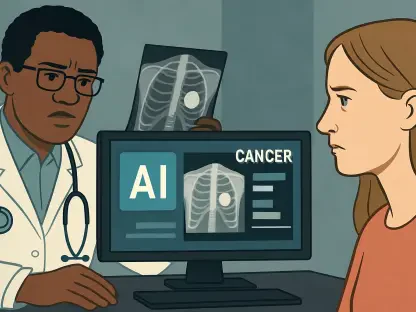Healthcare in prison settings has become a focal point of concern, with an emphasis on the technological disconnect undermining patient safety and efficiency. This issue is underscored by findings from various health oversight bodies, indicating a critical lack of interoperability between prison operational IT systems and healthcare IT networks. This disconnection leads to crucial patient data being inaccessible at key points, potentially compromising the quality of care provided to inmates. In the current setup, healthcare staff are burdened with the manual task of duplicating appointment and medical data across two separate systems, significantly increasing the risk of errors. These inefficiencies have led to consensus among prison officials that patient safety is being severely impacted. There is a need for urgent reform and a call to integrate digital systems, ensuring patient data is timely and accurately shared between prison and healthcare facilities. Initiatives are underway to bridge these communication gaps, with proposals aimed at embedding healthcare interoperability into the infrastructure of digital prison services to safeguard and enhance inmate care.
Challenges in Current Systems
The current state of interoperability within prison healthcare systems presents a challenge that extends far beyond merely transferring data. At its core, the problem lies in ensuring that vital patient information is not just shared but shared efficiently and in real-time. The lack of integration between prison and healthcare IT platforms means that vital medical records often fail to promptly reach those responsible for administering care. These delays can prove detrimental, especially in cases requiring immediate medical attention, where timely access to full medical histories is critical. The burden of duplicating information manually across systems not only increases the chance of omission and human error but also contributes to an overwhelming administrative workload for healthcare providers. This misalignment does not only threaten the quality of care but potentially jeopardizes patient outcomes. In turn, this administrative burden detracts from the time and resources that could be better allocated to direct patient care, further straining already limited healthcare resources within prison systems.
Beyond administrative headaches, the fragmented nature of these systems poses significant security and data privacy concerns. Without an integrated approach to healthcare data management, ensuring the confidentiality and integrity of sensitive medical information becomes even more challenging. Multiple system entries increase the risk of accidental data breaches, which can have far-reaching consequences for both patients and the institutions managing their care. Addressing these vulnerabilities requires a decisive shift towards more cohesive and secure data management practices. It emphasizes the necessity for digital transformation within the prison healthcare sector that not only prioritizes patient safety but also upholds the data integrity and confidentiality standards expected in any professional healthcare setting.
Steps Towards Integration
To combat these persistent issues, a strategic move towards the integration of digital systems is being actively advocated. This involves re-engineering processes to foster a seamless data flow between prison operations and healthcare services. One recommended approach is for HM Prison and Probation Services to incorporate interoperability as a cornerstone in redeveloping the Digital Prison Services model. This strategic inclusion would ensure that critical health information is readily accessible anytime and that healthcare providers are better equipped to deliver consistent care. With NHS England and the Department of Health and Social Care playing pivotal roles, their involvement in specifying interoperability requirements for healthcare IT procurement is also imperative. Such collaborative efforts hold the potential to streamline operations, reducing the manual workload on healthcare personnel and substantially lowering the likelihood of data input errors. Introducing systems that automatically update and synchronize when new appointments or treatments are added eliminates duplication and ensures data accuracy and timeliness.
Adopting technologies that facilitate smoother transitions from prison to community care packages upon inmate release also represents a significant advancement. The focus would not only shift towards bridging the gap between prison and external health services but ensuring continuity of patient care. This approach would lend itself to improved health outcomes for released inmates, easing the reintegration process into society with consistent healthcare support. Collaborative work between prisons and local GP practices ensures continuity, making comprehensive health records accessible beyond incarceration. As the conversation around digital transformation in healthcare continues, the emphasis remains on building systems that prioritize efficiency, security, and the well-being of all those involved.
Future Considerations
There is growing concern about healthcare in prison settings, highlighting the technological gaps that jeopardize patient safety and efficiency. Reports from various health oversight bodies emphasize a critical issue: the lack of interoperability between prison operational IT systems and healthcare IT networks. This disconnect results in vital patient information being inaccessible at key moments, potentially compromising the quality of care delivered to inmates. Healthcare staff currently face the daunting task of manually duplicating appointment and medical data across two distinct systems, a process that greatly heightens the risk of errors. Consensus among prison officials underscores the belief that patient safety is severely compromised. Urgent reforms are needed to integrate digital systems, ensuring that patient data is accurately and promptly shared between prison and healthcare facilities. Efforts are now being made to bridge these communication gaps by proposing that healthcare interoperability be embedded into the digital infrastructure of prison services to improve inmate care.









